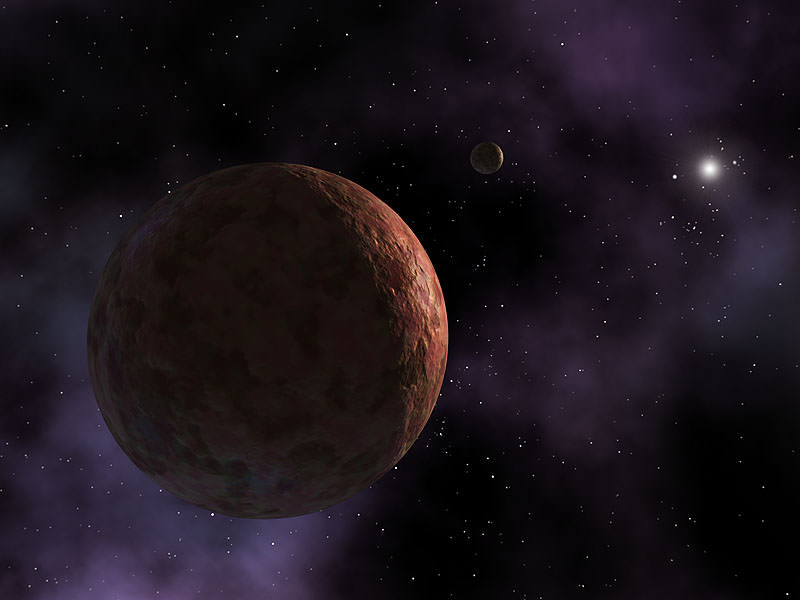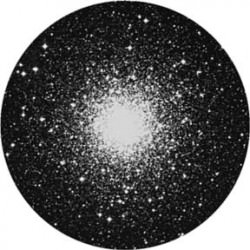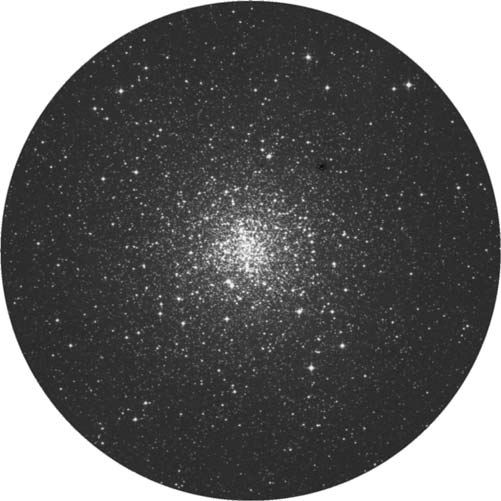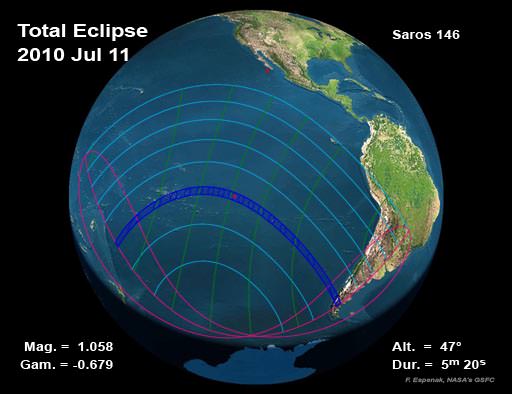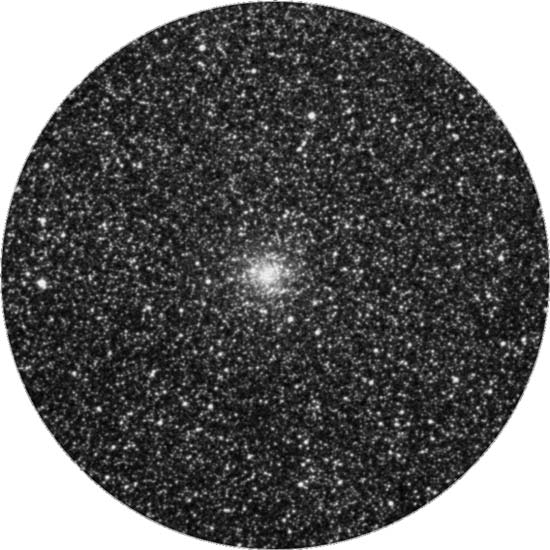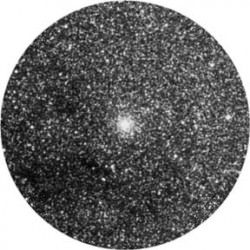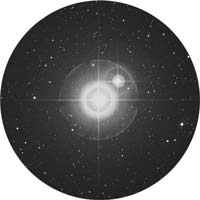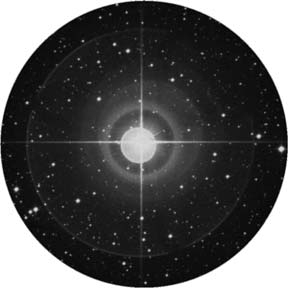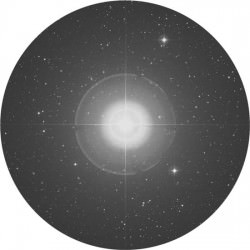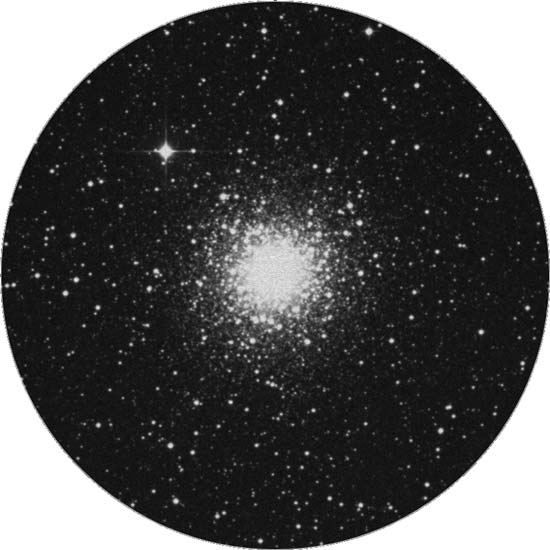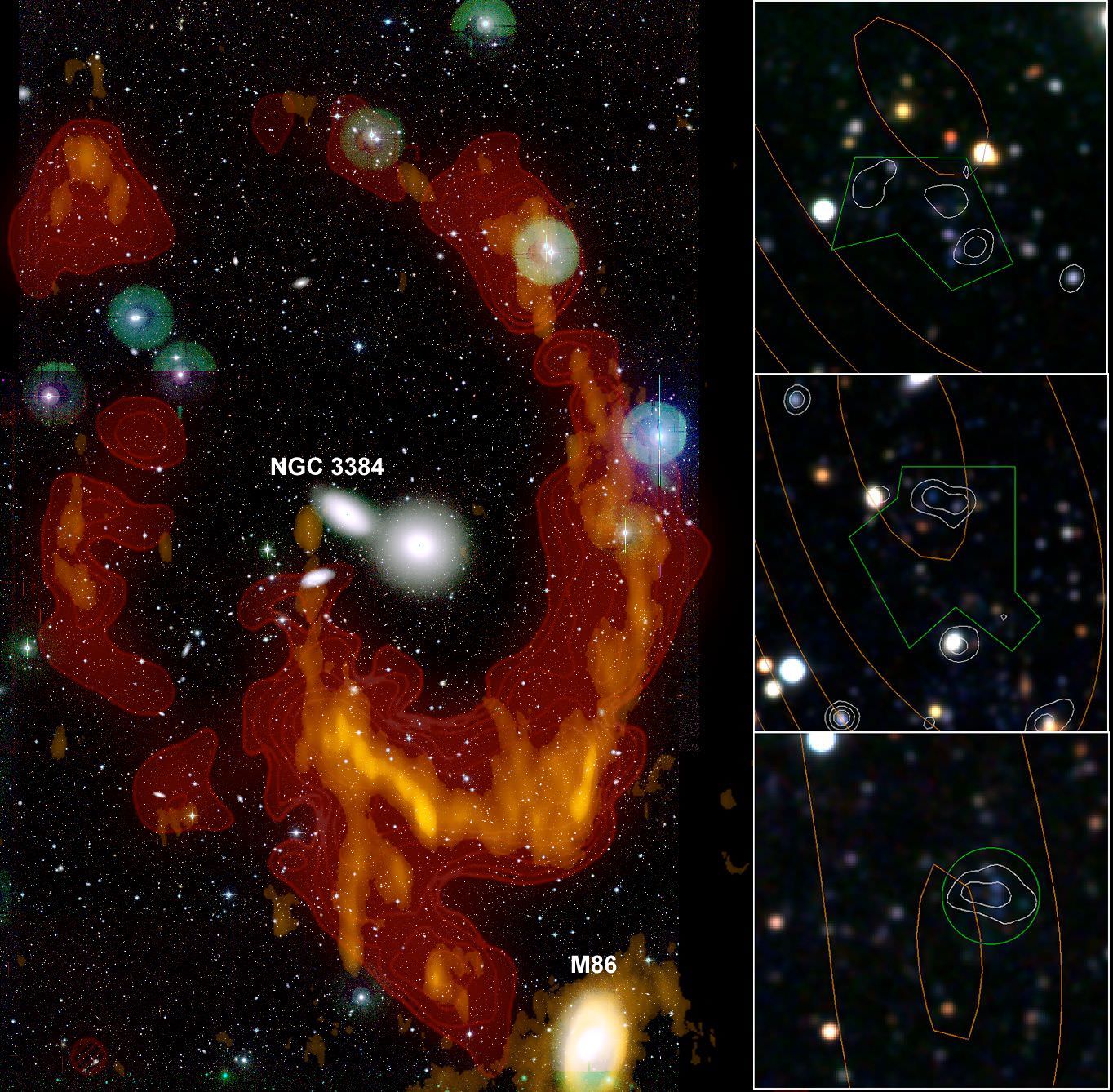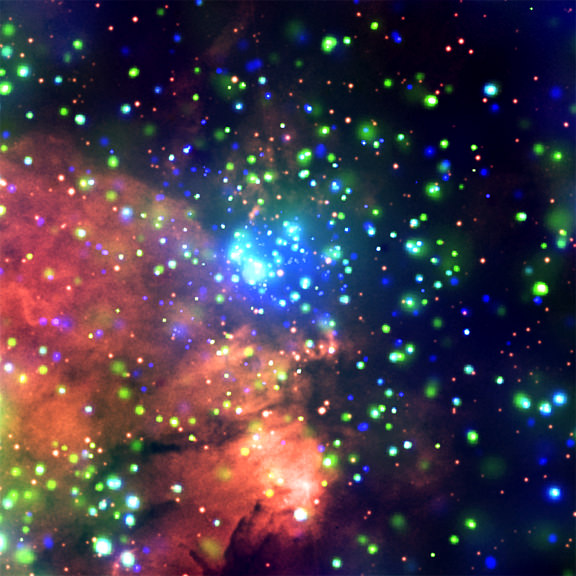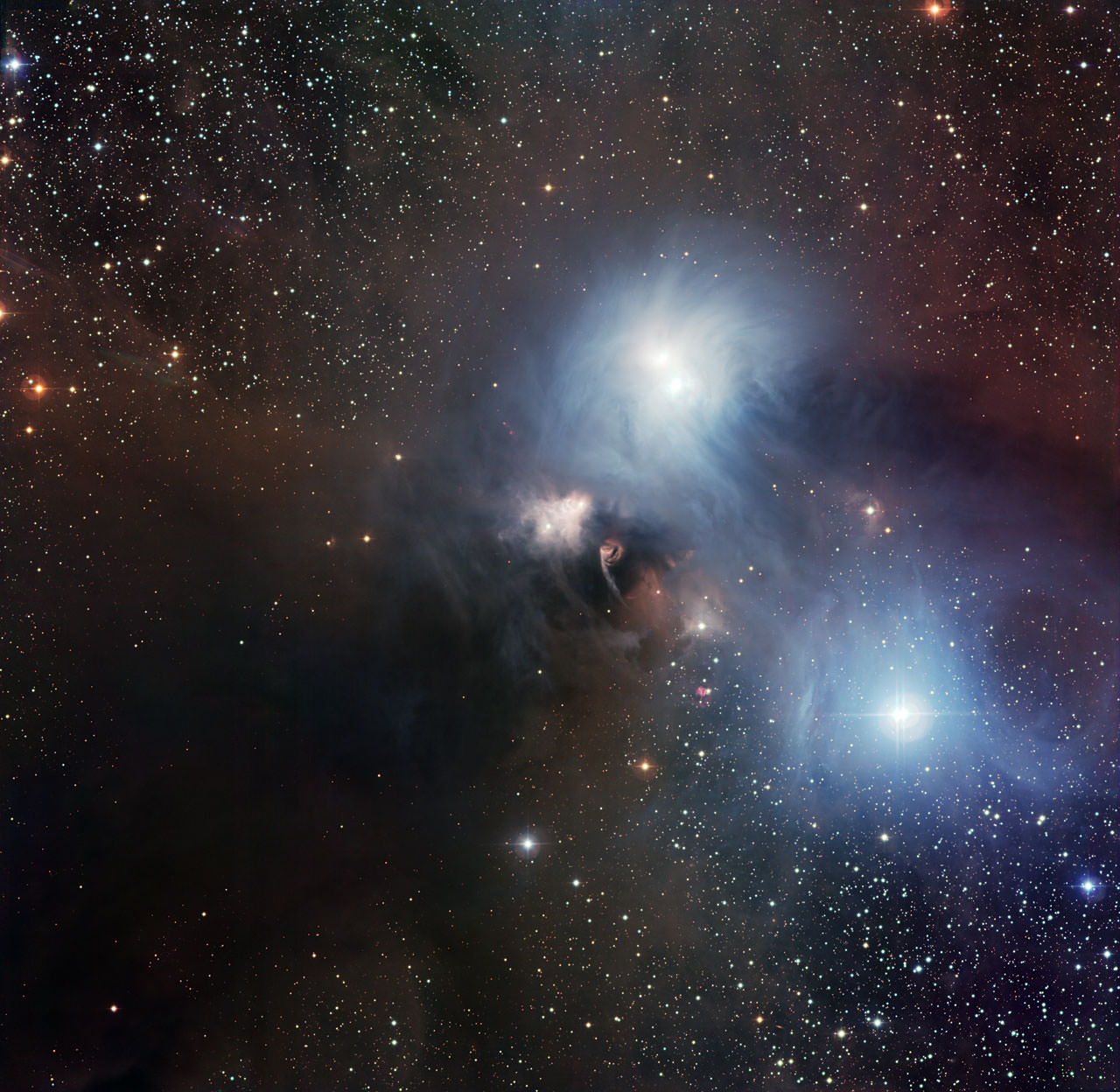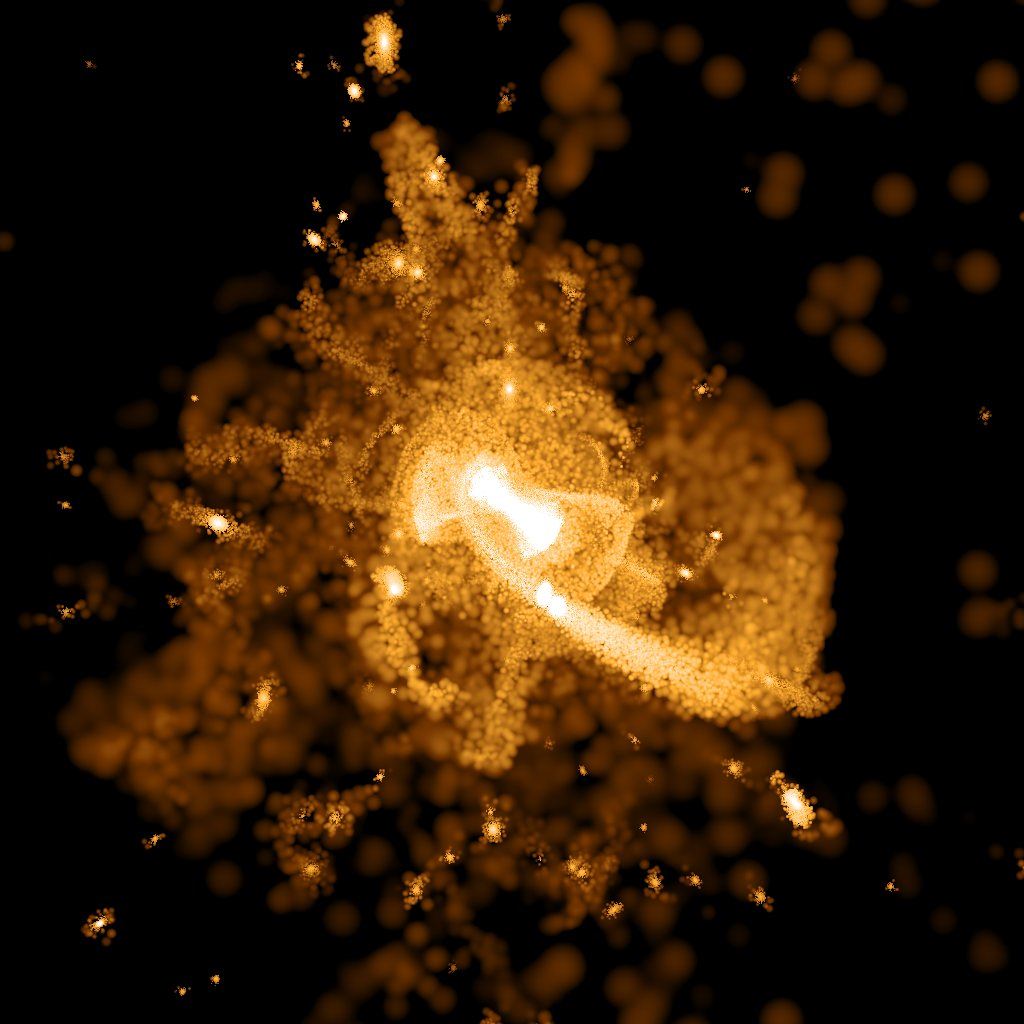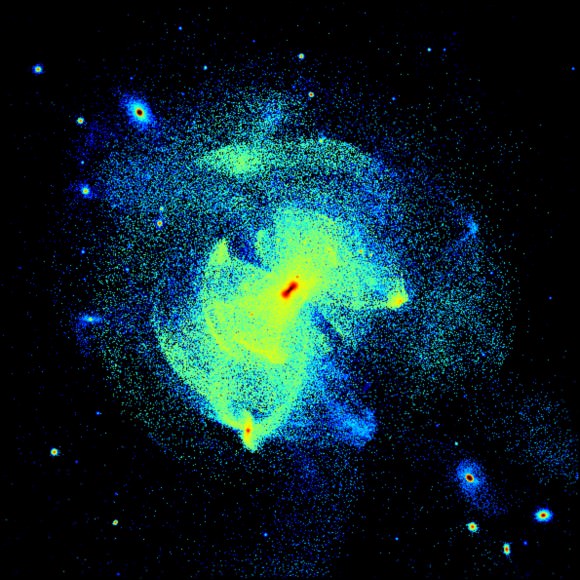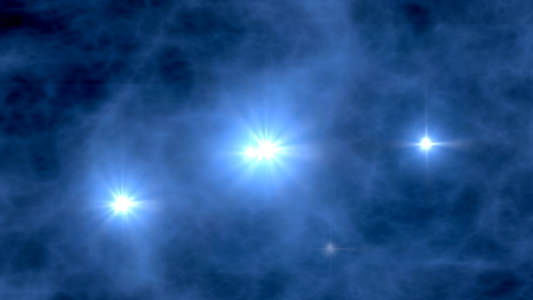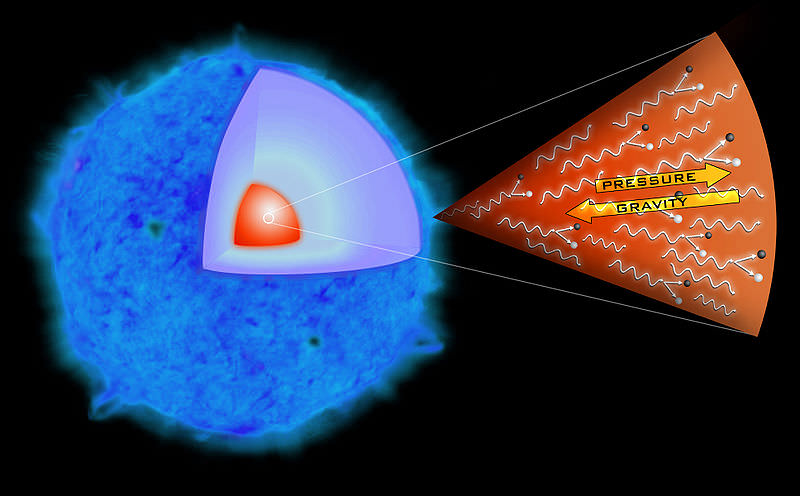[/caption]
It’s possible that if we do eventually observe the hypothetical objects that make up the hypothetical Oort cloud, they will all be a deep red color. This red coloring will probably be a mix of ices, richly laced with organic compounds – and may represent remnants of the primordial material from which the solar system was formed.
Furthermore, the wide range of colors found across different classes of trans-Neptunian objects may help to determine their origins.
The current observable classes of trans-Neptunian objects includes Pluto and similar objects called plutinos, which are caught in a 2:3 orbital resonance with Neptune towards the inner edge of the Kuiper belt. There are other Kuiper belt objects caught in a range of different resonant orbital ratios, including two-tinos – which are caught in a 1:2 resonance with Neptune – and which are found towards the outer edge of the Kuiper belt.
Otherwise, the majority of Kuiper belt objects (KBOs) are cubewanos (named after the first one discovered called QB1), which are also known as ‘classical’ KBOs. These are not obviously in orbital resonance with Neptune and their solar orbits are relatively circular and well outside Neptune’s orbit. There are two fairly distinct populations of cubewanos – those which have little inclination and those which are tilted more than 12 degrees away from the mean orbital plane of the solar system.
Beyond the Kuiper belt is the scattered disk – which contains objects with very eccentric elliptical orbits. So, although it may take hundreds of years for them to get there, the perihelions of many of these objects’ orbits are much closer to the Sun – suggesting this region is the main source of short period comets.
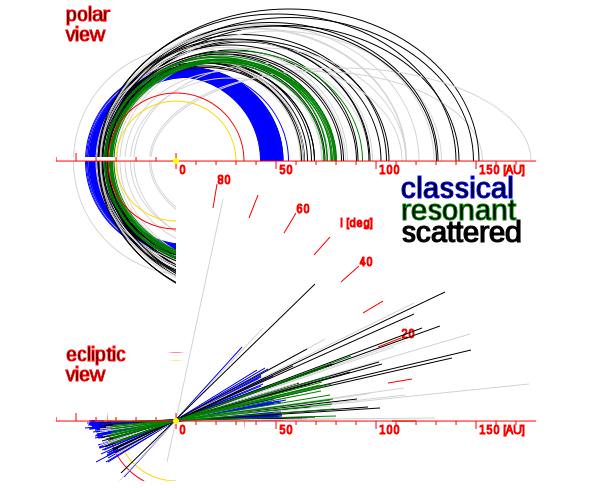
Now, there are an awful lot of trans-Neptunian objects out there and not all of them have been observed in detail, but surveys to date suggest the following trends:
- Cubewanos with little inclination or eccentricity are a deep red color; and
- Plutinos, scattered disk objects and highly inclined cubewanos are much less red.
Beyond the scattered disk are detached objects, that are clearly detached from the influence of the major planets. The best known example is Sedna – which is… yep, deep red (or ultra-red as the boffins prefer to say).
Sedna and other extreme outer trans-Neptunian objects are sometimes speculatively referred to as inner Oort cloud objects. So if we are willingly to assume that a few meager data points are representative of a wider (and hypothetical) population of Oort cloud objects – then maybe, like Sedna, they are all a deep red color.
And, looking back the other way, the ‘much less red’ color of highly inclined and highly eccentric trans-Neptunian objects is consistent with the color of comets, Centaurs (comets yet to be) and damocloids (comets that once were).
On this basis, it’s tempting to suggest that deep red is the color of primordial solar system material, but it’s a color that fades when exposed to moderate sunlight – something that seems to happen to objects that stray further inward than Neptune’s orbit. So maybe all those faded objects with inclined orbits used to exist much nearer to the Sun, but were flung outward during the early planetary migration maneuvers of the gas giants.
And the primordial red stuff? Maybe it’s frozen tholins – nitrogen-rich organic compounds produced by the irradiation of nitrogen and methane. And if this primordial red stuff has never been irradiated by our Sun, maybe it’s a remnant of the glowing dust cloud that was once our Sun’s stellar nursery.
Ah, what stories we can weave with scant data.
Further reading: Sheppard, S.S. The colors of extreme outer solar system objects.

